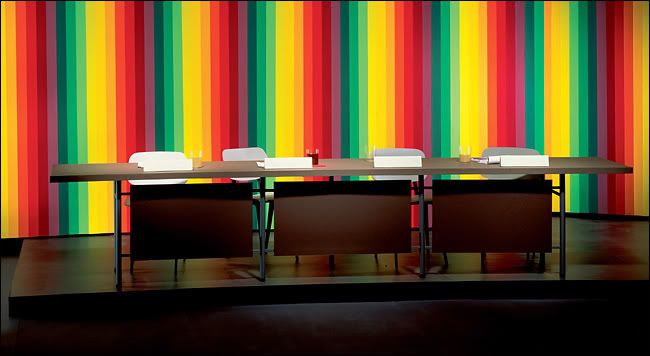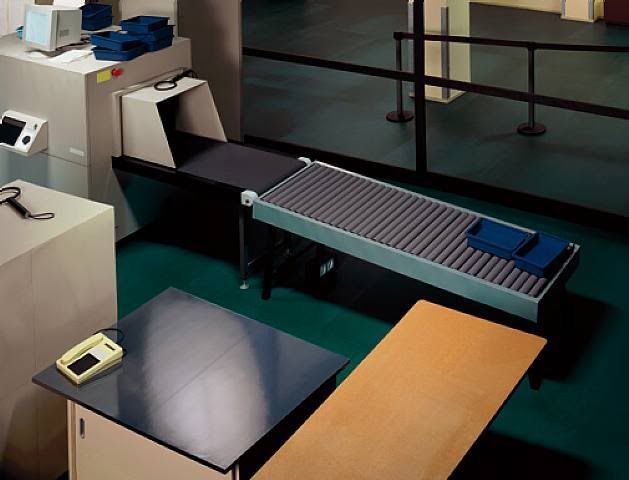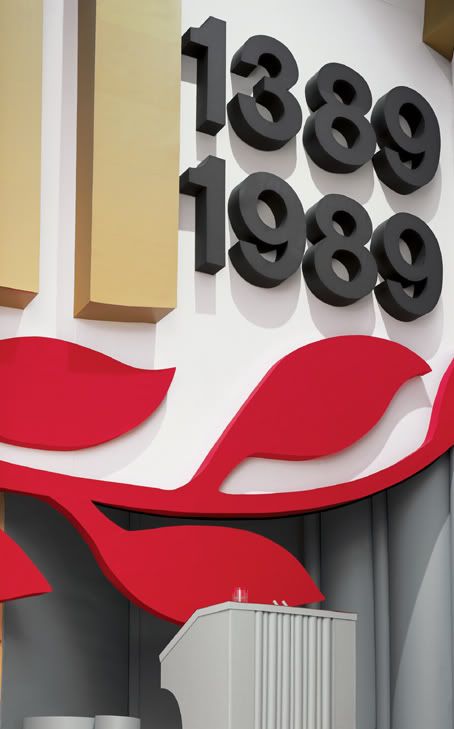
German photographer Thomas Demand doesn't capture images. He constructs them. In a process that can be called “painstaking”, Demand sculpts large-scale interior and exterior environments using card stock, paper, and acetate. Drawn from countless photographic resources, such as historical, criminological, and tabloid documentation, Demand taps into our collective photographic history to reconstruct past realities. These realities are then reintroduce into visual culture as a contextual re-birth and reexamination.
Demand's immaculate constructions reveal truths about their own mock realities. For example, each scene is devoid of any human figure, depicting an uncomfortable stillness. It is an arresting visual silence, like a Candida Hoffer photograph, but on a smaller, more focused scale. The physical characteristics of the objects within a scene can also betray the scene's reality. For example, telephones without numbers, or countless papers strewn about a ransaked office, all blank. These elements are not oversights on Demand's part, but are qualities intrinsic to his practice. Viewers are invited to navigate the images and understand them within a larger contextual area. To make exact replicas would be besides the point. Demand's images raise questions about many facets of fine art and photographic histories. Can we treat these spaces in a phenomenological sense? Is this brand of photorealism to be considered sculptural, or merely photographical? Or both. Why is Demand known foremost as a photographer, when his formal sculpting abilities surpass that of his photographic skills?

The works themselves are the photographs, while the sculptural installations are ephemeral creations which are created in Demand's studio, lit, photographed repeatedly with a 4x5 studio camera. Then the installations are deconstructed, leaving only the photographs. The photographer Jeff Wall states: “A photograph is something that makes invisible its before and after.” This speaks directly to Demand's practice. We never see the environments before completion, in relation to human scale, or how they are constructed; and we also never see the aftermath of the process. We only see the carefully edited image that Demand picks from hundreds upon hundreds of shots. It is within that single shutter click that Demand allows us to (attempt to) understand the greater whole. Everything else is invisible.

Within the fine art realm, Demand's work may be seen as a hybrid of New York-based artist Vik Muniz, and the Congo-based Bodys Isek Kingelez. Demand relates to Muniz for actively creating fine art of great delicacy and representational mastery, only to be destroyed and presented only as a photograph and to Kingelez for his investigations of architectural spaces by means of scale models and hands on construction. However, Demand departs from these others thematically. Demand's photographs are rarely "just rooms" they are almost always references to events in world history that range from comically obscure to deadly serious postmodern Memento Mori.
Check out
http://www.thomasdemand.de/
No comments:
Post a Comment